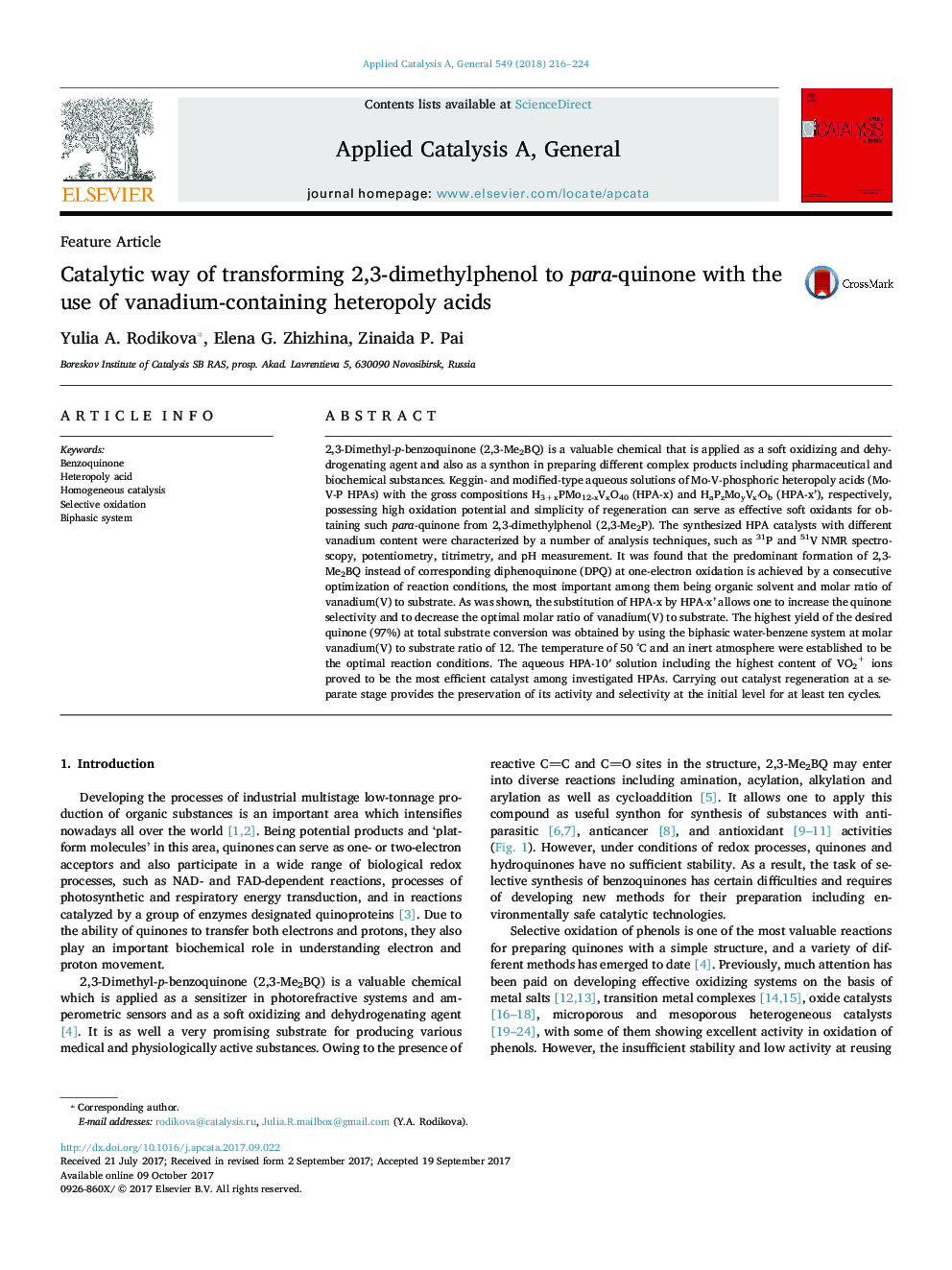| کد مقاله | کد نشریه | سال انتشار | مقاله انگلیسی | نسخه تمام متن |
|---|---|---|---|---|
| 6453220 | 1418497 | 2018 | 9 صفحه PDF | دانلود رایگان |
- New catalysts transform 2,3-dimethylphenol into p-quinone with yield of 97% without substrate polymerization by electron transfer to oxidant.
- The catalyst solution represents complex equilibrium mixture of V-containing heteropoly anions and VO2+ ions stabilized by H3PO4.
- The process can be used for soft oxidation or acid-oxidative transformation of organic substances to produce valuable products.
2,3-Dimethyl-p-benzoquinone (2,3-Me2BQ) is a valuable chemical that is applied as a soft oxidizing and dehydrogenating agent and also as a synthon in preparing different complex products including pharmaceutical and biochemical substances. Keggin- and modified-type aqueous solutions of Mo-V-phosphoric heteropoly acids (Mo-V-P HPAs) with the gross compositions H3+xPMo12-xVxO40 (HPA-x) and HaPzMoyVx'Ob (HPA-x'), respectively, possessing high oxidation potential and simplicity of regeneration can serve as effective soft oxidants for obtaining such para-quinone from 2,3-dimethylphenol (2,3-Me2P). The synthesized HPA catalysts with different vanadium content were characterized by a number of analysis techniques, such as 31P and 51V NMR spectroscopy, potentiometry, titrimetry, and pH measurement. It was found that the predominant formation of 2,3-Me2BQ instead of corresponding diphenoquinone (DPQ) at one-electron oxidation is achieved by a consecutive optimization of reaction conditions, the most important among them being organic solvent and molar ratio of vanadium(V) to substrate. As was shown, the substitution of HPA-x by HPA-x' allows one to increase the quinone selectivity and to decrease the optimal molar ratio of vanadium(V) to substrate. The highest yield of the desired quinone (97%) at total substrate conversion was obtained by using the biphasic water-benzene system at molar vanadium(V) to substrate ratio of 12. The temperature of 50 °C and an inert atmosphere were established to be the optimal reaction conditions. The aqueous HPA-10Ⲡsolution including the highest content of VO2+ ions proved to be the most efficient catalyst among investigated HPAs. Carrying out catalyst regeneration at a separate stage provides the preservation of its activity and selectivity at the initial level for at least ten cycles.
122
Journal: Applied Catalysis A: General - Volume 549, 5 January 2018, Pages 216-224
